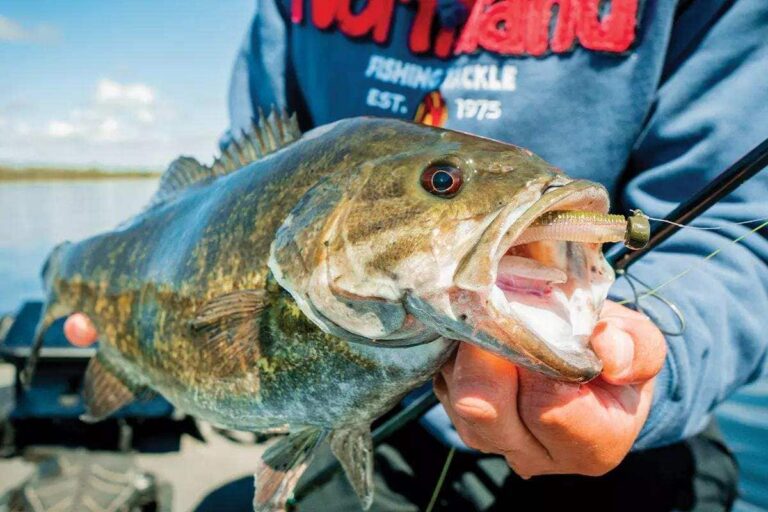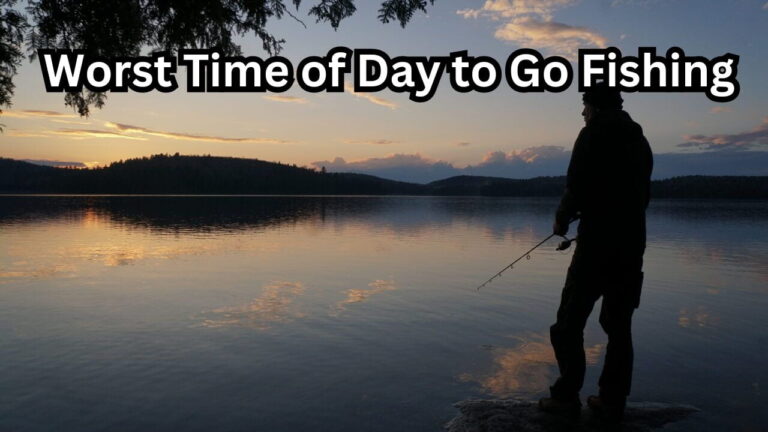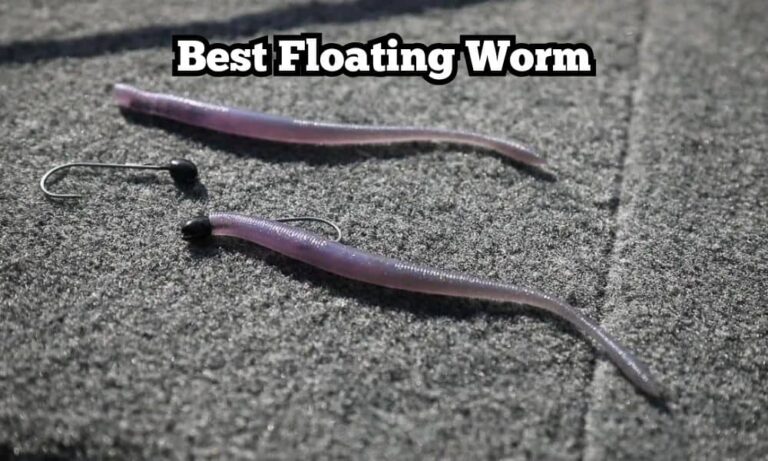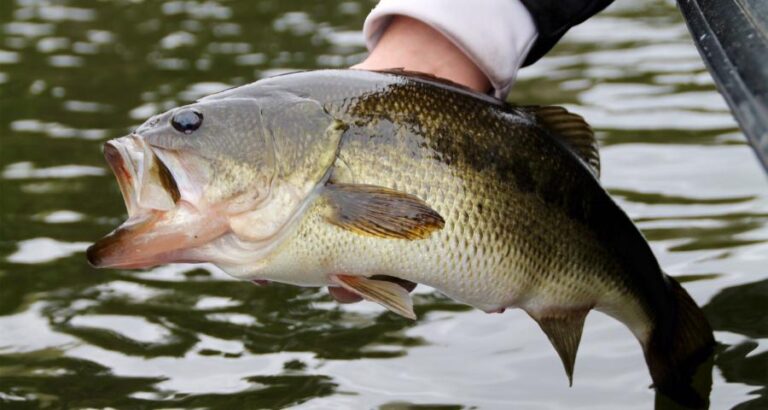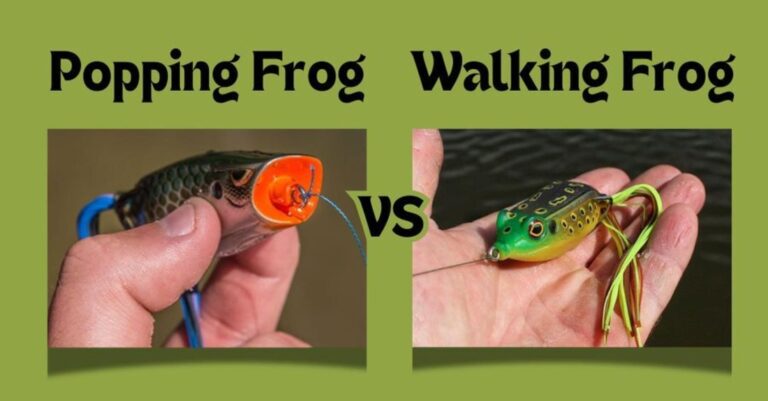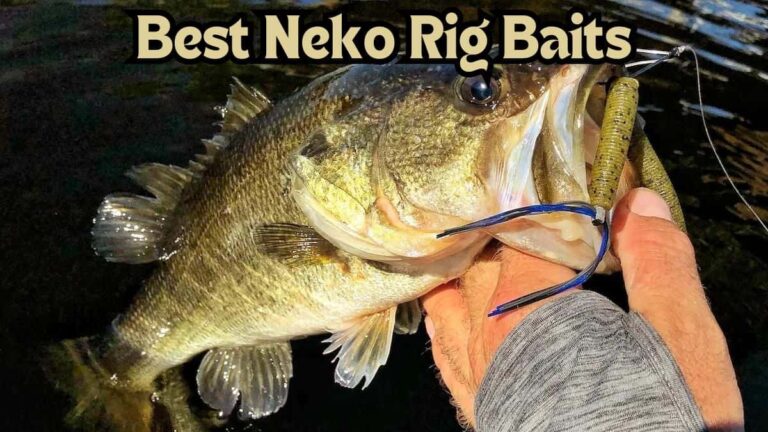Best Winter Pond Bass Fishing Lures

The winter can be a very challenging bass fishing season.
But it can also be a great opportunity for pond fisherman since there is much less competition and it is easier to find fish compared to a big lake.
What Do Pond Bass Do in the Winter?
Pond bass do the same thing as big lake bass in the winter time, just on a smaller scale.
Winter pond bass will go to deeper water and become less active.
The deep water is the warmest water in the pond during winter.
The advantage of fishing ponds in the winter is that there often isn’t super deep water.
Whether it is a natural pond or a farm pond, it will most likely only go to about 10-12 feet at the very deepest.
This means that fish don’t really have anywhere to go, and you can catch them in many of the same places as other seasons.
When the water gets cold, bass metabolism slows way down. This means bass won’t be as hungry or willing to chase food.
But that doesn’t mean you can’t catch them, you just need to use the bass lures.
Also Read: What Do Bass Eat in the Winter?
Winter Pond Bass Fishing Lures
Finicky winter bass require special types of lures to persuade them into biting.
These 5 lures have caught me more bass in the winter time than any others.
These baits also take into account the difficulties of winter bass fishing from the bank which is where most pond fisherman are fishing from.
1. Lipless Crankbait
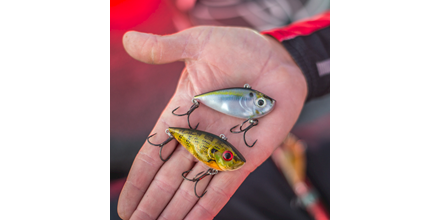
Lipless crankbaits are most popular for pre-spawn and fall bass fishing, but they are terrific for winter bass fishing as well.
The difference compared to those other seasons is the way you fish the bait in the winter.
When the fish have slow metabolisms and aren’t willing to exert energy chasing after prey, you need to make it easy for them.
The Yo-Yo fishing a lipless crankbait catches tons of cold water bass.
The Yo-Yo technique is essentially letting the bait sink to the bottom and then ripping it up, and then letting it sink again.
Rip the lipless crankbait a couple feet off the bottom and then let it flutter back down.
This mimics a dying baitfish making its last attempt of swimming around.
The Yo-Yo technique a very popular way of fishing big flutter spoons out in very deep, winter water.
But these spoons don’t work great in ponds. Lipless crankbaits work much better in the shallower water.
2. Jerkbait

Specifically, suspending jerkbaits are the favorite winter lure of most bass fisherman.
These bass lures can be fished very slowly because of the suspending nature. In very cold water, I will often pause the jerkbait for up to 10 seconds in between jerks.
Jerkbaits also have very realistic shapes, patterns, and actions which persuade many bass into striking.
I will admit, because of how you retrieve jerkbaits in cold water, they can be very boring to fish.
But they catch bass extremely well. So as long as you can be patient, it is hard to beat a suspending jerkbait when cold water bass fishing.
3. Drop Shot
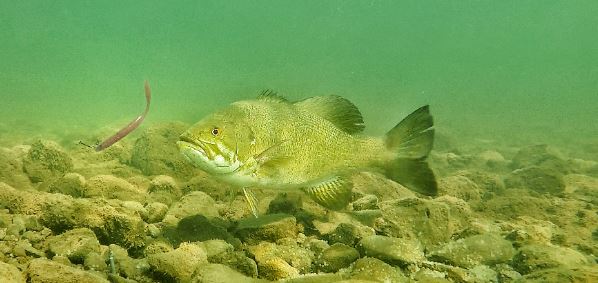
Cold water bass can be very finicky. Sometimes you need a finesse approach to entice them into biting.
The drop shot is one of the most visually appealing presentations you could possibly throw.
The drop shot allows you to hover a soft plastic about a foot off the bottom and wiggle it around.
This action is just ridiculous and convinces so many bass to eat. Even bass that aren’t hungry will eat a drop shot.
I mostly use a fluke or small swimbait soft plastics to try and imitate dying baitfish.
However, crawfish and worm presentations also work great for winter fishing.
If the pond I am fishing has shad, I will fish the fluke or swimbait soft plastics.
But if the pond doesn’t have shad, I will mostly use finesse worms or crawfish baits.
4. Glide Bait
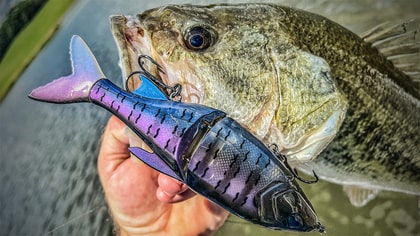
I have found that glide baits work best in really early winter or really late winter early spring.
They don’t seem to catch bass super well in the dead of winter, but slay during the two winter transitions.
During the winter transitions, there a lots of suspended fish. Especially during the bright times of the day.
You can’t really fish big glide baits in bit winter lakes because they don’t get deep enough.
But when fishing winter ponds, glide baits produce HUGE bass. If you don’t know what a glide bait is, it is essentially a very big and realistic baitfish imitation.
Most glide baits have a slow sinking characteristic, which allows them to be fished quite slowly in shallower waters.
Big winter bass are not going to chase or put effort into a small little snack.
But they will be willing to exert a bit more energy for a giant, slow moving, realistic presentation. This is especially true on warm winter days.
That is exactly what the glide bait is.
5. Paddle Tail Swimbait
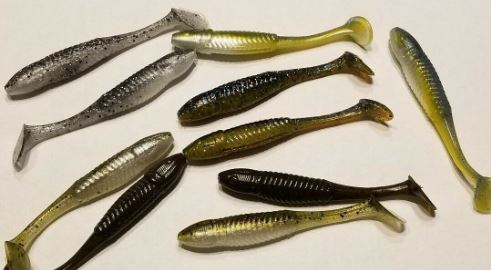
The paddle tail swimbait is another finesse bait that can trigger lots of winter time bites.
I have found that these lures tend to catch a bit more quantity over quality of bass.
But I have also caught big bass on them in the winter, so they do catch both.
There is two ways I fish a paddle tail swimbait in winter ponds.
First I will hop it around on the bottom similar to a jig or Texas rig.
The other way, which I slightly prefer, is to just reel it in super slowly on the bottom, often rigged up on an underspin.
I like to either have bottom contact or be a couple inches off the bottom. Reel the swimbait in slowly as you can while the tail is still moving.
Also Read: How to Rig Paddle Tail Swimbaits
Lure Color for Winter Pond Fishing
You want to use very realistic colors and patterns when winter bass fishing.
Because it rains much less in the winter, the water is going to be very clear.
This means fish can get a better look at your lure and if it doesn’t look natural, they will most likely not bite.
Fish are also less aggressive in the winter, so they are less likely to fall for flashy and catchy colors that will trigger reaction strikes in other times of the year.
If your pond has shad, use shad patterns. If you pond doesn’t have shad, use bluegill, baby bass, or crawfish patterns.
Black and blue can be a great color for fishing the deep, dark, winter water. And you really can’t go wrong using black and blue.
Also Read: Best Lure Colors for Winter Bass Fishing
Sound – Less is More
Going with the theme of natural presentations, try to limit the amount of sound your bait makes.
Use lipless crankbaits and jerkbaits without beads or rattles in them. Soft plastics are always silent, so you don’t have to worry about sound when using them.
You don’t need to annoy these fish or trigger a reaction strike. You are trying to give them a natural and convincing lure.
Gear for Winter Bass Fishing

During the winter, I will always use fluorocarbon line. Fluorocarbon is virtually invisible.
This is important because the winter water is clearer and fish are more finicky. If they see your line, they probably won’t bite.
Also try to use a light line as you can get away with. This will further help with the line visibility, but also allow you to cast further.
Since bass move out to deeper water in the winter, you need to be able to cast all the way out to them.
Also read: Best Late Fall Bass Fishing Lures
Key Takeaways
- Winter Challenges for Bass Fishing:
Winter presents challenges for bass fishing due to decreased fish activity and metabolism.
However, pond fishing during winter offers advantages such as less competition and easier fish location compared to larger lakes.
- Behavior of Pond Bass in Winter:
Pond bass exhibit similar behavior to their counterparts in big lakes during winter.
They move to deeper water, which is warmer in the winter, and become less active.
- Advantages of Fishing Ponds in Winter:
Ponds usually have shallower depths, limiting the fish’s movement and making them easier to locate.
Fishing in ponds, whether natural or farm ponds, can be productive at depths of around 10-12 feet.
- Winter Bass Fishing Lures:
Lipless Crankbait: Utilize the Yo-Yo technique by letting the bait sink and then ripping it up, mimicking a dying baitfish.
Jerkbait: Suspended jerkbaits, retrieved slowly, with realistic shapes and actions, are effective in cold water.
Drop Shot: A finesse approach with soft plastics, hovering a foot off the bottom, can entice finicky winter bass.
Glide Bait: Effective during winter transitions in ponds, offering a slow, realistic presentation imitating large baitfish.
Paddle Tail Swimbait: A finesse bait for winter, hopped on the bottom or reeled in slowly, triggering bites.
- Lure Color for Winter Pond Fishing:
Opt for realistic colors and patterns in clear winter water, considering the natural prey of the bass.
Shad patterns work well if the pond has shad, otherwise, use bluegill, baby bass, or crawfish patterns.
- Sound – Less is More:
Limit the amount of sound in your bait during winter fishing.
Use lipless crankbaits and jerkbaits without beads or rattles to present a more natural and convincing lure.
- Gear for Winter Bass Fishing:
Use fluorocarbon line for its near-invisibility, crucial in clear winter water.
Opt for light line to further reduce visibility and increase casting distance, essential when bass move to deeper water.
FAQ
- Are ponds a good choice for winter bass fishing?
Yes, ponds offer advantages during winter, including shallower depths, making it easier to locate bass compared to larger lakes.
- What lures work best for winter pond bass fishing?
Effective lures include lipless crankbaits using the Yo-Yo technique, suspended jerkbaits, drop shot with finesse soft plastics, glide baits during transitions, and paddle tail swimbaits.
- Why is lure color important in winter pond fishing?
Just as pond lure selection is important, colors are as well. With clear winter water, bass can get a better look at lures, making realistic colors and patterns crucial for success.
- How important is sound in winter bass fishing?
Less sound is preferred in winter fishing to present a natural and convincing lure. Lipless crankbaits and jerkbaits without beads or rattles are recommended.
- What gear is recommended for winter bass fishing?
Fluorocarbon line is essential for its near-invisibility, and using light line aids in reducing visibility and increasing casting distance, crucial for deeper water fishing during winter.
Also read: How to Fish a Shaky Head
Reeling this In
The winter season scares off lots of largemouth bass anglers.
Don’t be on of them. Take advantage of the free waters to catch as many bass as you can.
You don’t need to go out into 30-40 feet of water on the great lakes to catch winter bass.
Ponds offer plenty of bass to catch and they are much easier to find. So this winter, get out there and catch as many as possible.

